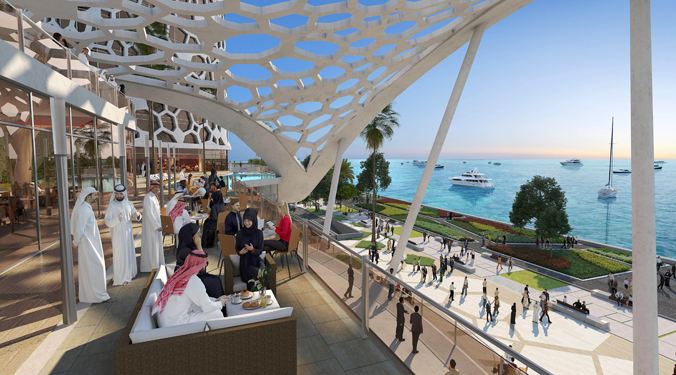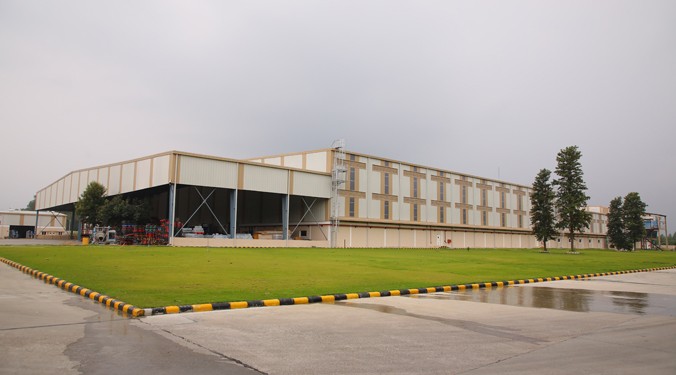Achieving safety management and energy conservation during tunnel construction

A case study on using CompactRIO to build an IoT system for tunnel construction, simultaneously achieving safety management and energy conservation.
Background
The Zenitaka Corporation has two major business areas: its architectural business focuses on structures such as government buildings, office buildings, and commercial facilities, while its civil engineering business is targeted at structures such as tunnels, bridges and dams. Within these areas, the company observed two issues that have always persisted in regard to the construction of mountain tunnels. These issues are “improving safety” and “reducing energy consumption”.
The Challenge
In order to tackle the challenges mentioned above, Zenitaka decided to build a system that could improve the safety of tunnel construction as well as reduce the amount of power consumed. In other words, this new system would facilitate a clear picture of which workers were working in each location at the mountain tunnel construction site, as well as which processes were being carried out at those respective locations at any given time. The system would maintain the safety of all workers while also carefully controlling the electrical equipment to reduce unnecessary power consumption.
Having decided on the concept, Zenitaka’s next concern was whether there existed any kind of robust hardware that would not break down at the construction work site, that could move freely in response to changes in the working environment, and that could accurately detect workers and vehicles using Radio Frequency Identification (RFID). Given that this system would involve many components that were new to the company, Zenitaka decided to enlist the cooperation of E.I.Sol Co., Ltd. (E.I.Sol) as its joint development partner.
The Solution
E.I.Sol put forth various proposals in response to Zenitaka’s system concept and its corresponding requirements. It suggested use products from National Instruments (NI) as a means of realising the system. Specifically, E.I.Sol suggested use of NI LabVIEW as the software platform and NI CompactRIO as the hardware platform to build the system.
Figure 1 is a conceptual diagram depicting ‘TUNNEL EYE’, the system jointly developed by Zenitaka and E.I.Sol for controlling safety and energy conservation. This system uses IoT to simultaneously provide functionality for both safety management and in reducing power consumption in mountain tunnel construction. As of March 2016, Zenitaka had implemented this system at the construction work site for the Shido Tunnel on the Takamatsu Expressway.

This system is composed of a server located on site, such as in the office at the construction work site, and multiple control terminals with allocated IP addresses (Figure 2). CompactRIO worked as the control terminals, and the required functionality has been developed using LabVIEW. Each control terminal is fitted with components such as an RFID reader for detecting workers and construction vehicles entering the tunnel, a densitometer for measuring the concentration of substances such as dust and combustible gases, and a wattmeter monitoring the operational status of the construction lighting, ventilating fan, and tunnel excavating machinery. These terminals are attached to each piece of electrical equipment that will be controlled, as well as to the electrical distribution boards that are positioned every 100 metre within the tunnel, and all are linked to the server via the network.
Figure 2: A control terminal built using CompactRIO

Each control terminal collects data on the position of workers and vehicles within the tunnel, as well as on the concentrations of various gases, and sends this information to the server. Data received by the server is analysed and processed, and instructions for controlling the lighting and ventilating fan are then issued to the terminals based on the data results. This mechanism correlates the various kinds of measurement data with the electrical equipment, and utilises the IoT for intercommunication to control and automatically reduce power consumption. CompactRIO-based distributed measurement systems use CompactRIO to perform measurements and process data. In most cases, these results are only sent in a single direction: upstream to the server. However, the TUNNEL EYE system is also able to send data downstream from the server to CompactRIO. This two-way data transfer is one of the special features of the TUNNEL EYE system.
By building the system in this way, we have been able to achieve improvements in safety and reduced power consumption. The respective benefits are described in further detail below.
Firstly, we have improved safety by ensuring that all people entering the work site carry a portable RFID tag. This has enabled the company to manage work site entry electronically. In addition, Zenitaka can now determine the location of each person working on site, and record their movements within the site. This means it can track a person’s location based on his/her previous movements if an emergency situation occurs in the tunnel work site, such as a fire or cave-in.
Although there have been similar other types of tunnel entry management systems in the past, the major distinguishing feature of the TUNNEL EYE system is that data on the workers can be linked to the operation of the automatic controls for the lighting and ventilating fan. In other words, the energy saving feature is linked to the safety confirmation feature and operates accordingly once confirmation of worker safety has been assured. Let us illustrate this functionality using the example of transporting excavated earth. Huge dump trucks must make return trips into the tunnel as part of this process. The TUNNEL EYE system detects the movement of these trucks and triggers the lighting to make it brighter than usual. At the same time, the speed of the ventilating fan is automatically increased to cope with the exhaust fumes from the entering truck, as well as the dust particles from the excavated earth that will be blown around by the movement of the truck. As another example, take the case of workers located at the face of the tunnel excavation while electrical equipment such as a drill jumbo is being operated. In this scenario, no vehicles are making return trips, so exhaust fumes and dust particles are less of an issue. The system automatically controls the lights to dim the brightness elsewhere in the tunnel and reduce the speed of the ventilating fan. Unnecessary power consumption can be reduced, thanks to the ability to automatically control the lighting and ventilating fan to suit any combination of various situations, such as whether workers or construction vehicles are present, the operating status of construction machinery, and the concentration of various gases. If safety in the tunnel has been confirmed, the lighting and fan may also be switched off using a tablet device. In addition, a breakdown of the volume of power used on site can now be visualised. This is an essential step towards achieving reduced energy consumption.
In particular, the ability to control the ventilating fan contributes greatly to reducing energy consumption. Ordinarily, the fan would be operated continuously at maximum speeds. However, the reality is that high speeds are not required when there is minimal dust. Accordingly, the concentration of dust is measured by a densitometer and then the speed of the fan is adjusted based on these results to prevent power from being wasted unnecessarily. This is a method that has been used previously. However, there is one important difference with the TUNNEL EYE technique. Under the previous method, the tunnel face environment might already be covered in high concentrations of dust by the time dust is detected by the densitometer. This is because the densitometer is positioned approximately 50m away from the tunnel face to prevent faults that could be caused by contact with the construction machinery or by explosive blasts. By the time the dust is detected, it is already too late to start increasing the speed of the ventilating fan. In contrast, the TUNNEL EYE system detects workers and construction vehicles, measures the power consumption of each piece of equipment, and measures the concentration of substances in the air. Based on this collective information, the kind of activity being conducted within the tunnel can be recognised automatically. If the system then predicts that this activity will cause the volume of dust to increase, it can automatically configure the ventilating fan to operate at maximum speed in preparation, rather than wait until the densitometer actually detects a high concentration of dust. This achieves enhanced reliability of the continued safety of workers in comparison to previous methods. The program for this kind of control flow has been revised countless times for optimisation, resulting in smooth operation and efficient energy conservation.
Thanks to the use of CompactRIO, which allows reconfiguring, and LabVIEW, which facilitates graphical development, the design and implementation of the TUNNEL EYE system was able to be completed in just two months. Following this, it was repeatedly tested and revised, and even this latter process was concluded in one month.
Future developments
Zenitaka also plans to apply new systems to future mountain tunnel construction. However, if the system is to be used on other sites, it is scalable and flexible enough to be modified through software so that it can meet any additional requirements that can arise on other construction sites. Each work site has different requirements and styles, such as the use of dust collectors in addition to ventilating fan, or using continuous belt conveyors rather than trucks to remove the excavated earth. Modular instruments like CompactRIO should easily be able to handle these variations. There is also a demand from work sites to automate some processes that are currently performed manually, so systems may further evolve in this direction in the future.
Conversely, E.I.Sol has expressed interest in selling this new system to external parties under the brand name ‘TUNNEL EYE’. It offers an effective system that can simultaneously resolve the issues related to safety management as well as energy conservation.
Authored by__
Masatsugu Shiraishi: The Zenitaka Corporation
Kei Hirasawa: Eisol
___________
Challenge
The Zenitaka Corporation wanted to build a system that could resolve two key issues for construction sites in mountain tunnels: Secure the safety of workers by facilitating an electronic process; and create a mechanism for automatically reducing power consumption at construction site.
Solution
NI developed an IoT (Internet of Things) system using CompactRIO that can detect the workers and vehicles, measure the concentration of substances such as dust or combustible gases, and monitor and control various kinds of electrical equipment. Use the data collected to confirm that the safety of workers can be assured, and then reduce the amount of unnecessary energy consumption by automatically controlling the lighting and ventilating fan.
34
Cookie Consent
We use cookies to personalize your experience. By continuing to visit this website you agree to our Terms & Conditions, Privacy Policy and Cookie Policy.









